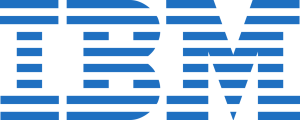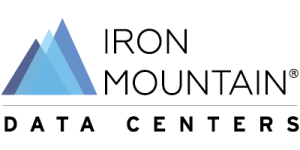Iowa’s $150M Annual Tax Incentives for Data Centers: The Midwest’s Bid for Digital Dominance
Turning Cornfields into Cloud ZonesIn the latest chapter of America’s data infrastructure boom, Iowa has emerged as a dark horse with big ambitions. With the announcement of a new $150 million per year tax incentive program specifically tailored for data centers, the Hawkeye State is making its most aggressive play yet to attract hyperscale, edge, and colocation investments.Often overshadowed by tech hubs like Northern Virginia, Phoenix, or the Pacific Northwest, Iowa is quickly repositioning itself as the Midwest’s cloud engine—one where land is cheap, electricity is abundant, and local governments are hungry for high-tech jobs and long-term tenants.This new incentive package is designed to solidify Iowa’s role in the data economy for the next two decades. But it’s not just about luring logos—it’s about shaping a future where rural America becomes the physical backbone of the digital world.What the Incentive Package IncludesThe newly passed Iowa Data Infrastructure Act (IDIA) offers one of the most comprehensive state-level support systems for data center operators in the U.S. Key components include:Sales and use tax exemptions on servers, electrical equipment, software, and backup systemsProperty tax abatements for up to 20 years on qualifying campusesIncome tax credits for data center operators who invest over $200 million in infrastructureTraining and development grants for hiring and retaining skilled workersFast-track permitting for facilities over 10 MWRenewable energy development support including credits for on-site wind, solar, or storage projectsTo qualify, data centers must commit to a minimum of $100 million in capital investment, 35 new full-time jobs, and at least 5MW of new IT capacity. The most lucrative tiers of the incentive plan kick in at $500 million+ builds, which Iowa hopes will attract major hyperscalers and cloud-native service providers.Why Iowa? Geography Meets GridUnlike its peers in coastal regions, Iowa offers a rare combination of attributes that make it especially attractive for data infrastructure:Low natural disaster risk (minimal seismic and hurricane activity)Cool climate that reduces year-round cooling costsExpansive flat terrain for horizontal campus developmentExtensive wind energy grid—Iowa already sources over 60% of its power from renewablesProximity to Midwest population centers like Chicago, Minneapolis, and St. LouisThe state’s central location also means latency-neutral access to both coasts, which makes it ideal for AI inference workloads, content delivery, and SaaS backbone services.The Economic BetState lawmakers estimate that the program could bring in over $3 billion in new data center investment by 2030, potentially creating:4,000+ temporary construction jobs2,500+ permanent operational and technical rolesThousands of indirect jobs in logistics, energy, maintenance, and retailMore importantly, data centers often act as “anchor tenants” in rural communities, stabilizing local economies with consistent, long-term spending on utilities, security, and local contracting.Unlike factories or distribution centers that can relocate or close with market cycles, data centers are high-capex and sticky. Once built, they tend to stay.Who’s Already Building?Several major players already operate in Iowa, drawn in by past incentive packages, cheap power, and abundant land. These include:Meta: Operates a 2.5 million sq ft campus in AltoonaMicrosoft: Building a multi-billion-dollar campus in West Des MoinesGoogle: Long-time investor in Council Bluffs, now expanding with AI clustersApple: Maintaining a 400,000 sq ft facility in WaukeeWhat’s changing now is the emergence of second-tier players and colocation operators interested in tapping into Iowa’s fiber backbone. New announcements from Digital Realty, Switch, and Equinix are rumored for 2025–2026.Iowa’s Grid AdvantageElectricity is one of the top three operating costs for any data center. Iowa’s utility landscape provides a clear advantage:Wholesale prices below $0.05/kWhFlexible direct access contracts with MidAmerican and Alliant EnergyWind PPA compatibility—Iowa is a national leader in wind productionGrid stability backed by the Midcontinent Independent System Operator (MISO)Several facilities are now being designed to operate as energy prosumers, feeding excess generation back into the grid during low-load cycles and pulling from local wind farms during peak compute periods.Data Centers as Digital AgricultureThere’s a poetic symmetry to Iowa’s new role: once known primarily for growing corn and soybeans, it’s now cultivating digital crops—training models, storing datasets, and streaming content to millions.Local farmers are even benefiting directly. Land leases for data center construction pay significantly more than crop contracts, and solar or wind interconnection deals offer a stable second income for large property owners.Tech-driven agriculture (agritech) startups are also clustering near hyperscale zones, taking advantage of the AI and connectivity backbone to power new business models in yield prediction, drone telemetry, and bioinformatics.The Long-Term Vision: Digital MidwestIf Iowa succeeds in attracting a new generation of hyperscale and edge data centers, the entire Midwest could see renewed economic relevance. A regional corridor stretching from Nebraska to Ohio could emerge as the new digital heartland, offering:AI training campusesGreen energy innovation clustersAdvanced cooling RD labsMulti-regional cloud availability zonesThis could reduce America’s current data center concentration in a handful of metro areas and open new opportunities for decentralization, grid integration, and rural revitalization.Implications for Other StatesIowa’s $150 million/year commitment raises the bar for other states competing in the data infrastructure race. Expect to see new proposals or expansions in:Texas, which already provides strong property tax abatements for hyperscale campusesGeorgia, now wooing European colocation providersTennessee, which recently passed tax-free zones for edge computing facilitiesNorth Dakota, working with Crusoe Energy to use flare gas for data processingBut Iowa’s advantage lies in being first to legislate a dedicated, repeatable program rather than negotiating one-off incentive deals. That gives investors clarity, reduces bureaucratic lag, and signals long-term stability.The Future of Tax Incentives in the AI EraAs AI drives exponential growth in compute demand, the incentives arms race is likely to intensify. But sustainability will become a determining factor. States will increasingly compete not just on tax relief—but on:Access to green energySpeed of interconnectionGrid resilienceWater stewardshipCarbon intensityIowa’s edge may endure if it continues integrating its energy, agriculture, and education policies with data infrastructure planning.
























